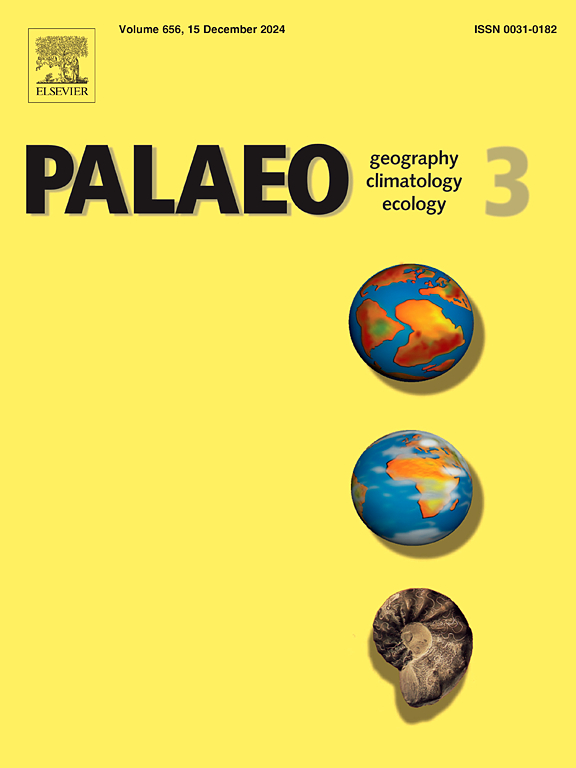Middle Eocene Climatic Optimum drove palaeoenvironmental fluctuations and organic matter enrichment in lacustrine facies of the Bohai Bay Basin, China
IF 2.6
2区 地球科学
Q2 GEOGRAPHY, PHYSICAL
Palaeogeography, Palaeoclimatology, Palaeoecology
Pub Date : 2025-02-01
DOI:10.1016/j.palaeo.2024.112665
引用次数: 0
Abstract
The Middle Eocene Climatic Optimum (MECO) is a transient warming episode during an interval of long-term Cenozoic cooling that is recorded in deep-sea marine sediments and marine basins; however, the MECO is rarely reported in terrestrial contexts, complicating its comparison with marine settings. In this study, we describe well-dated core samples from the Shahejie Formation, Dongpu Depression, Bohai Bay Basin, China, using thin-section observations, isotope geochemistry, and elemental geochemistry to determine lacustrine MECO records and associated palaeoenvironmental changes. Based on previously published age models, we identified that the MECO event (40.7–40.07 Ma) in the Dongpu Depression occurs at a core depth of 2945–3046 m and we report two δ13Ccarb excursions and one δ18Ocarb excursion. During the MECO event, the palaeoclimate was warm and humid, characterized by reduced salinity and increased water depth, consistent with contemporaneous marine and lacustrine palaeoenvironmental changes, indicating the global importance of MECO-induced environmental fluctuations. In conjunction with palaeoenvironmental changes, we established models for organic matter (OM) enrichment at our site. OM enrichment was influenced by palaeosalinity and water depth. The warm, humid climate, increased water depth, reduced salinity, and elevated atmospheric CO2 concentrations provided favorable conditions for algal growth. Additionally, the anoxic conditions at the bottom of the lake facilitated the preservation of OM. This study provides new insights into palaeoenvironmental changes driven by climatic events and offers perspectives for predicting organic carbon sequestration in modern lakes.
求助全文
约1分钟内获得全文
求助全文
来源期刊
CiteScore
5.90
自引率
10.00%
发文量
398
审稿时长
3.8 months
期刊介绍:
Palaeogeography, Palaeoclimatology, Palaeoecology is an international medium for the publication of high quality and multidisciplinary, original studies and comprehensive reviews in the field of palaeo-environmental geology. The journal aims at bringing together data with global implications from research in the many different disciplines involved in palaeo-environmental investigations.
By cutting across the boundaries of established sciences, it provides an interdisciplinary forum where issues of general interest can be discussed.

 求助内容:
求助内容: 应助结果提醒方式:
应助结果提醒方式:


